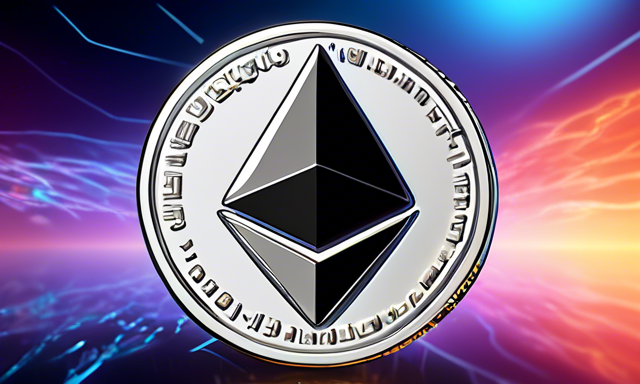Ethereum Struggling to Reach All-Time High: What You Need To Know
If you’re following the cryptocurrency market, you’ve probably noticed that Ethereum (ETH), the second-largest cryptocurrency by market cap, has been hovering around $2590 since the beginning of this year. Despite recent fluctuations, Ethereum has struggled to reach its all-time high. Here’s a closer look at some of the major flaws that have contributed to Ethereum’s challenges:
Scalability Issues
One of the key drawbacks of Ethereum is its scalability problem, which has been a long-standing issue for the network. Scalability refers to the ability of a blockchain network to handle a large number of transactions quickly and efficiently. Ethereum’s current infrastructure faces challenges when it comes to processing transactions at a high speed, limiting its scalability and overall performance.
- Ethereum’s scalability issues have become more pronounced as the network has grown in popularity and usage.
- The limited transaction processing capacity of Ethereum has led to congestion on the network, resulting in slower transaction times and higher fees.
- Developers have been working on solutions to improve Ethereum’s scalability, such as the upcoming Ethereum 2.0 upgrade, which aims to address these challenges through various enhancements.
High Gas Fees
Another significant problem that Ethereum users face is the issue of high gas fees. Gas fees are the transaction fees that users pay to process transactions on the Ethereum network. These fees can vary depending on network congestion and other factors, often making transactions costly for users.
- The high gas fees on Ethereum have been a deterrent for users, especially for those looking to make smaller transactions or interact with decentralized applications (dApps).
- Users have expressed frustration over the unpredictability of gas fees, which can fluctuate based on demand and network conditions.
- As a result, users have been seeking alternatives to Ethereum that offer lower transaction fees and a more cost-effective experience.
Competition From Rival Networks
In addition to its internal challenges, Ethereum also faces stiff competition from other blockchain networks that offer similar functionalities with improved features. Rival networks such as Binance Smart Chain, Solana, and Avalanche have gained traction in the market by addressing some of the scalability and cost issues that plague Ethereum.
- These networks have attracted users and developers with faster transaction speeds, lower fees, and innovative solutions that enhance the user experience.
- As a result, Ethereum has had to contend with losing market share to these competing networks, which offer compelling alternatives for users looking for a more efficient and cost-effective blockchain solution.
- While Ethereum remains a dominant player in the market, the rise of these rival networks poses a significant challenge to its long-term success and growth.
Regulatory Concerns
Regulatory uncertainty and crackdowns on cryptocurrencies have also had an impact on Ethereum’s performance. Government regulations and restrictions on crypto trading and usage can create uncertainty in the market, leading to fluctuations in prices and investor sentiment.
- Recent regulatory developments, such as the crackdown on crypto mining in China and the proposed regulations in the US, have raised concerns among investors and users in the crypto space.
- These regulatory challenges can affect the adoption and growth of Ethereum, as well as other cryptocurrencies, by creating barriers to entry and limiting market access.
- As the regulatory landscape continues to evolve, it remains to be seen how Ethereum will navigate these challenges and maintain its position in the market.
Conclusion
While Ethereum has established itself as a leading blockchain platform with a wide range of use cases and applications, it continues to face significant challenges that impede its growth and impact its ability to reach its all-time high. Addressing these flaws and finding solutions to improve scalability, reduce gas fees, and navigate regulatory hurdles will be crucial for Ethereum’s long-term success in the ever-evolving cryptocurrency market.
Hot Take: Are You Ready to Embrace Ethereum’s Potential?
As Ethereum grapples with its major flaws and challenges, the future of the network remains uncertain. Whether Ethereum can overcome these obstacles and regain its momentum in the market is a question that only time will answer. Stay tuned for further developments and updates on Ethereum’s journey in the cryptocurrency landscape.





 By
By
 By
By
 By
By


 By
By